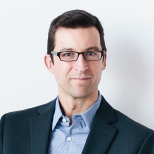November 21, 2013 — Globally 1.2 billion people live in areas of water scarcity — defined by the United Nations as locations with an annual water supply that drops below 1,000 cubic meters per person.
A program recently launched by UNESCO may offer new hope to these and millions of others around the world.
The Groundwater Resources Investigation for Drought Mitigation in Africa Programme — GRIDMAP for short — is using advanced satellite imagery to locate aquifers in Turkana, one of Kenya’s poorest and driest regions.
Some of the hidden aquifers lie just meters below the surface, but haven’t been visible until now.
According to UNESCO water specialist Casey Walther, GRIDMAP “finds groundwater by combining satellite technology with local information and oil industry data.” French inventor Alain Gachet created the technology.
To date, over 250 billion cubic meters of groundwater have already been discovered in the Turkana region, including many shallow reserves and five deeper underground aquifers.
If expanded globally, and if the water it finds is used sustainably, GRIDMAP has the potential to dramatically change the lives and livelihoods of those living in some of the world’s most water-scarce regions.
Ensia shares solutions-focused stories free of charge through our online magazine and partner media. That means audiences around the world have ready access to stories that can — and do — help them shape a better future. If you value our work, please show your support today.
Yes, I'll support Ensia!